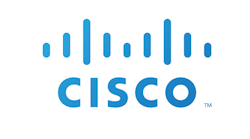The growth of the Internet of Things (IoT), wired and wireless connectivity and the widespread prevalence of smartphones are rapidly transforming both public and private modes of transportation. Cities of all sizes are exploring ways to use technology to reduce vehicle congestion, optimize public transit routes, increase safety and enable faster response from emergency responders and roadway maintenance crews. But for these types of connected transportation initiatives to happen, cities, states and local governments will need both new technology architectures as well as physical infrastructure to enable the sharing of data between all types of vehicles, transit systems and the environment around them.
Forecasts show that more than 380 million connected cars are expected to be on the road by 2021. Each of these highly automated vehicles are like a data center on wheels, capable of generating up to four terabytes of data per hour as they communicate with each other and to the infrastructure around them. With hundreds of millions of these vehicles hitting the roads in the next few years, cities and local governments have a very short timeframe in which to prepare for this transformation.
To prepare for a connected transportation future, cities will need to focus on building greater connectivity and establishing policies and procedures for data privacy, security and exchange. They will also need to learn how to identify the types of projects that are core to their mission.
1. Build Greater Connectivity and Security
One of the greatest challenges that cities face is the need for greater connectivity. Much of the transportation infrastructure today is either not connected or is built on legacy systems, making it difficult to gather and share data from different infrastructure assets all running on disparate technology platforms. For connected transportation to become a reality, cities need to be able to gather data in real-time from IoT-enabled assets like traffic lights and road sensors, combine it with other data such as current weather data or video feeds from IP cameras, and share it with connected vehicles, public transit systems, emergency response crews and more.
To increase connectivity, cities will need to invest in building out both the technology infrastructure – data centers, cloud infrastructure, power, fiber optic cable, routing infrastructure and more – as well as the hardened, physical infrastructure assets such as IoT-connected traffic signals and sensors along roadways. In the U.S., cities should take the reference designs for connected and automated vehicle systems provided by the Department of Transportation and use them to plan and build their technology architectures. (European cities can look to the strategy for Cooperative Intelligent Transport Systems (C-ITS) for reference design architectures.)
Using these reference designs as a framework, cities will need to begin building a data center architecture that is capable of scaling to handle the huge volume of data and traffic that will be generated by the hundreds of millions of connected vehicles and infrastructure assets that will all be communicating with each other. They should plan to build a multi-service network that can integrate multiple different technologies onto one common platform. This will allow everything from the traffic signals, to connected cars, to weather data, to all function on the same infrastructure. In contrast, many cities currently have a fragmented approach, where different aspects of the transportation system are built on separate infrastructures, causing challenges as they attempt to collect and integrate data from disparate sources.
Moving out of the data center and toward the edge of the network, cities will also need the hardened industrial assets that enable a connected transportation infrastructure. From sensors on roads and traffic signals to IP video cameras at transit stations, these assets should be IP addressable, able to be secured and built to withstand environmental conditions. They will need to be waterproof, have outdoor temperature ratings, the right radio technologies, certifications and validation.
All the while, cybersecurity needs to be end-to-end, spanning from the data center to the hardened assets at the edge of the network. As transportation systems become more connected, they increasingly become alluring targets for cybercriminals, who can attack both the information technology and operational technology to cause significant disruptions. Cities should ensure that cybersecurity investment is a high priority in both capital planning as well as operational planning, much the way safety is today. They should plan to develop an integrated security architecture to cover the gaps that point solutions cannot address and should consider starting a security operations center (SOC) if they have not done so already. Joining an information sharing and analysis center (ISAC) such as the surface transportation ISAC can also help cities maintain an eye on the ever-evolving threat landscape.
2. Establish Policies for Data Privacy
In addition to increasing connectivity, cities, states and local governments will also need to consider how to address data security and privacy considerations. As leading cities begin implementing more connected transportation initiatives, they are discovering that many issues around data sovereignty, privacy and monetization are still being figured out. Concerns are being raised over how much control drivers of connected vehicles have over the data they generate and share, as well as what parties get to use the data generated by the different elements of a connected transportation system.
As a result, cities will need to develop and put into place appropriate processes, policies and procedures for data security and privacy. These will need to address what data will be collected, how it will be collected and who gets access to it. These policies and procedures should also take into consideration what data needs to be collected and shared in real-time, and what doesn’t. For example, data that can affect safety needs to be shared in real-time so it can be acted upon in a matter of milli-seconds, not minutes. It is also critical that this be a national – and where possible, international – data exchange and architecture. This will enable the sharing of real-time safety data with connected and highly automated vehicles of all types as they come onto the network so they can gain the maximum safety, mobility, and efficiency value from the data that cities, local, and national governments have to share.
3. Identify Projects that are Core to Your Mission
One of the most important elements of preparing a connected transportation future is to set goals and identify projects that are core to your mission. While it can be tempting for city officials to want to green-light projects that seems glamorous or will provide quick results, those won’t solve long-standing challenges in transportation or serve the community in the way it should be served. Officials should ask themselves what are the fundamental transportation problems they’re looking to solve, and then prioritize them. While different cities, states and local municipalities will have different needs, most transportation officials will agree that their core mission is to increase the safety, efficiency and mobility of transportation.
There are many ways in which connected transportation initiatives can help that core mission. For example, a popular safety initiative is traffic signal preemption. By connecting sensors on traffic signals to emergency vehicles and enabling the real-time exchange of data between the two, cities can prioritize emergency responders, allowing them to preempt the traffic signals and arrive on the scene faster. By using standardized technologies like intelligent transportation systems (ITS) and dedicated short rage communications (DSRC), these systems can share data with other modes of transportation and serve as an early use case for deploying the infrastructure necessary for connected and highly automated vehicles. Using the same technology, cities can also provide traffic signal prioritization for mass transit agencies that also enable eco-driving -- where connected vehicles know the timing of upcoming traffic signals and automatically adjust their speed so they encounter more green lights. Fewer stops and starts equals less congestion. With a multi-service network architecture that enables greater connectivity throughout all transportation infrastructure, mobility can be improved by enabling citizens to plan, schedule and pay for their trips across all different modes of transportation from one unified platform, enabling a frictionless travel experience.
Cities have a short timeframe in which to prepare for the connected transportation future. Connected and highly automated vehicles will soon be hitting the roads in great numbers, whether governments are prepared or not. By using the reference design frameworks described above, cities can build a technology architecture that enables greater connectivity and exchange of data across all transportation assets, from the data center to the network edge, to the in-vehicle systems. When combined with strong network security and established policies governing data privacy, this technology architecture serves as the foundation upon which all future connected transportation initiatives will be built. With the ability to bring together all different types of connected assets and data onto one common platform, cities will be able to implement the types of connected transportation initiatives that match their core mission and serve their citizens through improved safety, efficiency and mobility.
Barry Einsig is a global automotive and transportation executive with Cisco.

